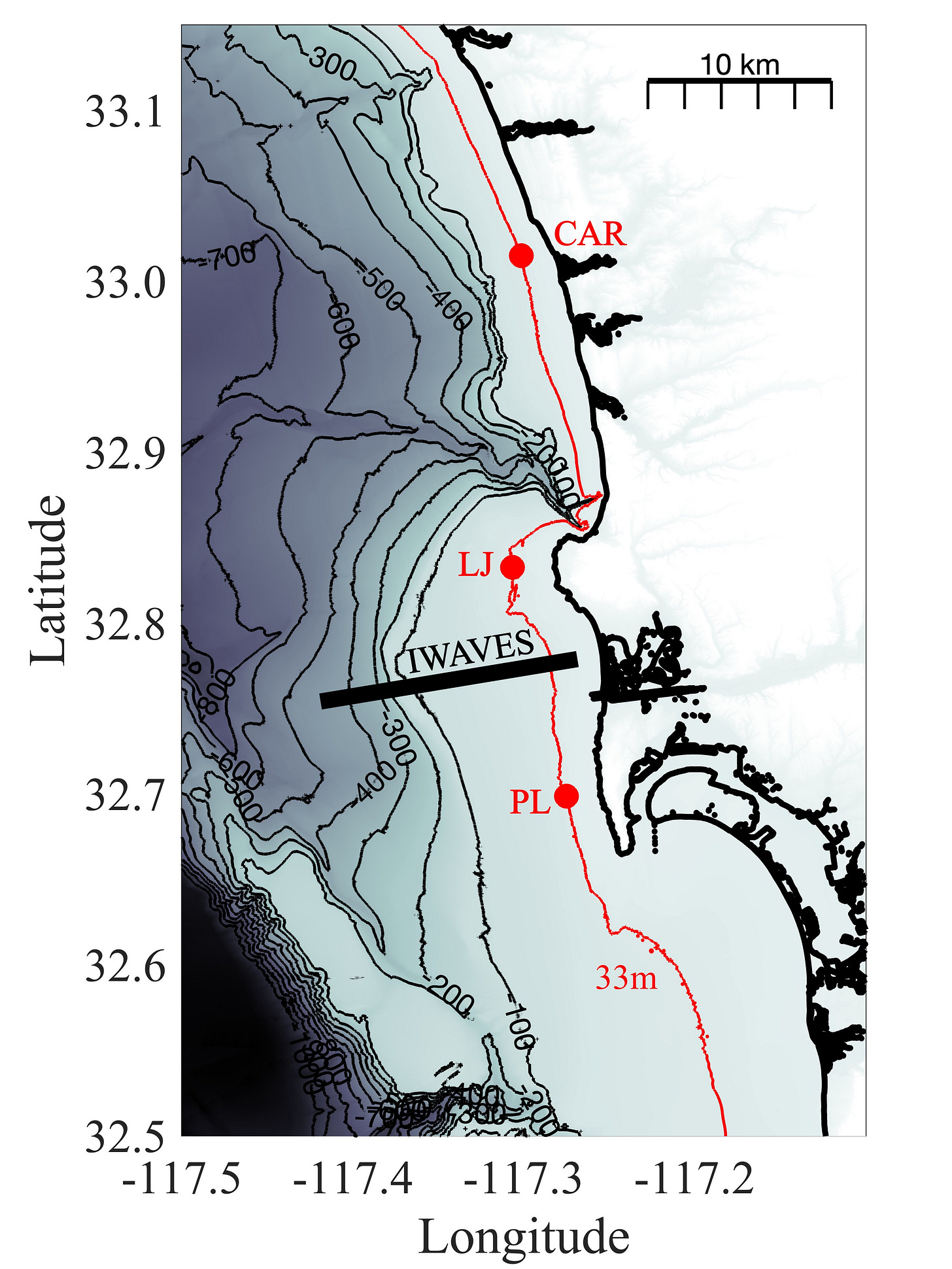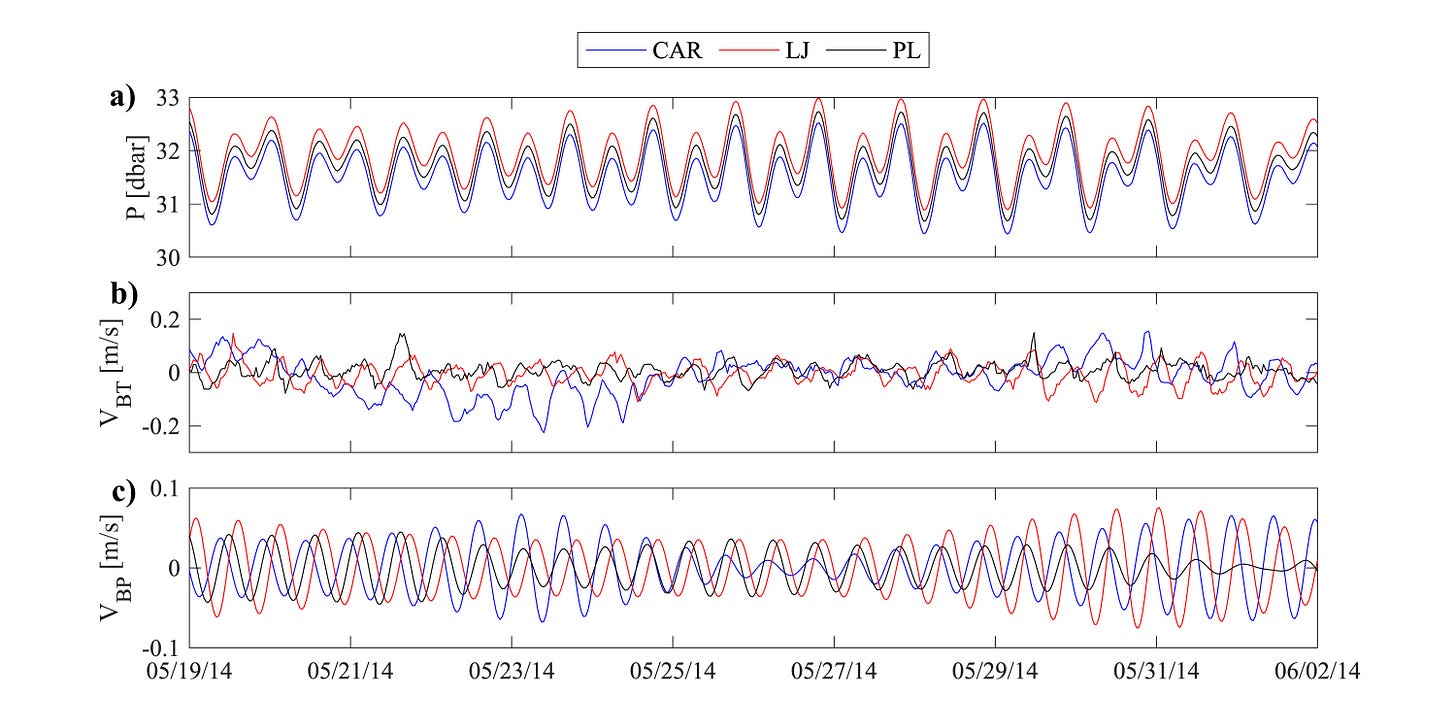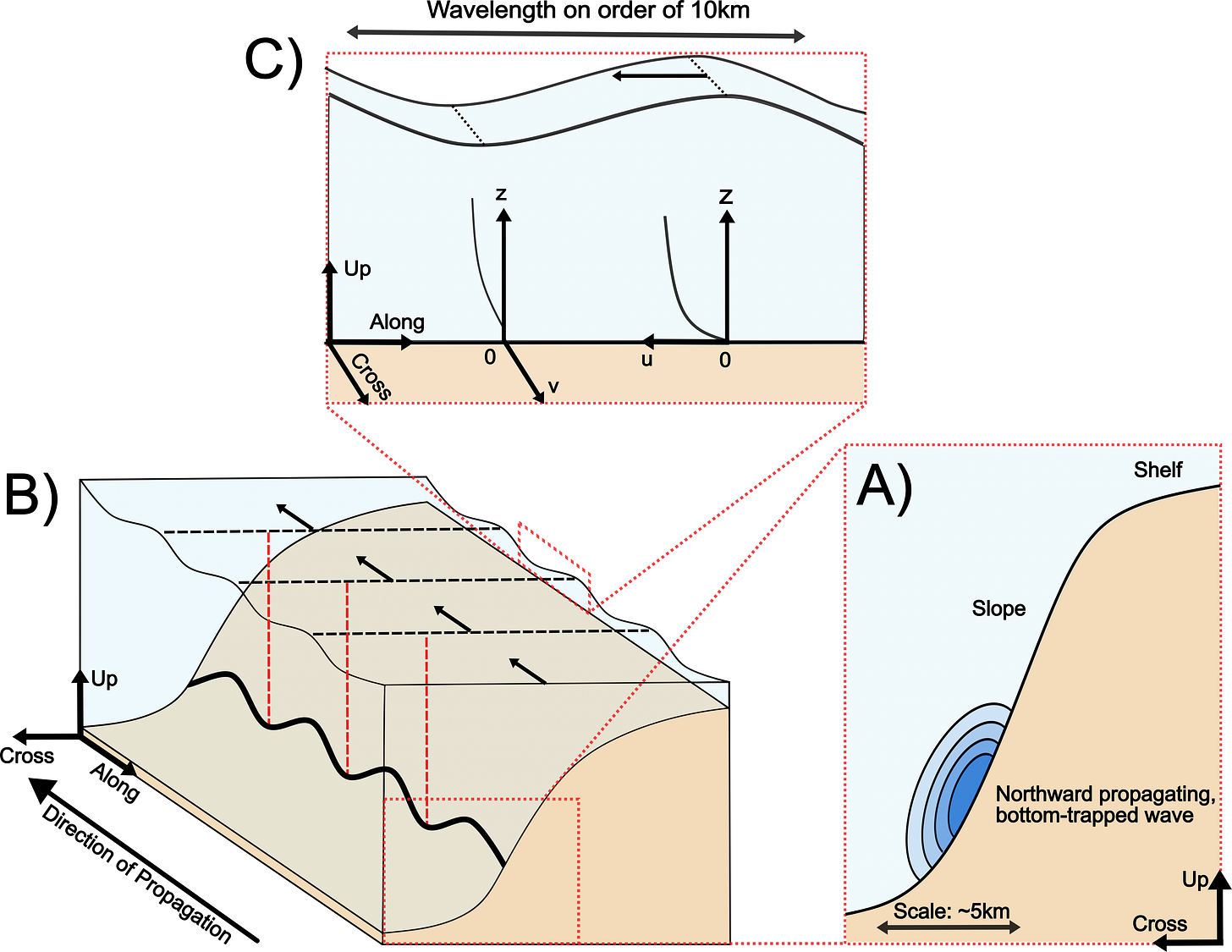Why don't coastal currents follow the tides? Part 1
We're going to take a break from fins for a bit. A couple of weeks ago, a paper of mine was published after about four years of back-and-forth sciencing. Our findings potentially close an open question about what drives currents in the waters just outside the surf zone that Scripps oceanographers have asked since 1970.
The story starts with a simple question: at high tide, what way is the current flowing? This question matters beyond curiosity. These currents carry kelp, marine life, pollutants, and nutrients along the shore. They determine where the wax that flakes off your board ends up and influence the waves that eventually reach the beach.
The inner shelf - the stretch of ocean between the surf zone and where the continental shelf drops into the deep ocean - acts as a porous border between shore and open ocean. In San Diego, this zone extends from roughly where you stop being able to touch bottom out to a few hundred feet deep.

For decades, scientists assumed regular twice-daily tides dominated the flow in this region. The logic made sense: tides are powerful, predictable, and both the currents and surface height have strong signals at the tidal frequency. The semidiurnal tides, specifically driven by the moon's gravity, seemed like the obvious driver behind the strong alongshore currents measured in this zone.
But since 1970, multiple studies here and elsewhere have seen weird discrepancies between measured currents and the height of the passing tide. If tides alone drove the currents, we'd expect the alongshore current to be neatly in-phase with pressure - the strongest northward current occurring at high tide. Numerous times, this wasn't the case.

As our study argues, the largest semidiurnal currents here are actually driven by coastal trapped waves working beneath the surface. These waves form when internal waves - disturbances that travel along boundaries between water layers of different density - encounter the sloping seafloor and become partially trapped along the coast. Think of these waves traveling along the coast like sound waves in a hallway, guided by the underwater topography.
Internal waves exist because the ocean isn't uniform. Cold, salty water sits beneath warmer, fresher layers, creating invisible boundaries that waves can travel along. Tidal forces pushing water over underwater ridges and canyons create internal waves, much like wind creates surface waves.
The Southern California coast provides ideal conditions for this process. Dramatic shelf drops create steep underwater topography, seasonal temperature changes create distinct water layers, and complex underwater features like the La Jolla Canyon add more complexity to the wave generation. This complexity has led many researchers to consider internal wave behavior essentially unpredictable - a view our research challenges by identifying clear seasonal patterns in how these waves behave.
When these internal waves encounter the sloping seafloor on the outer slope of the continental shelf, at roughly 300-500 meters depth in our case, they can become trapped by a balance of refraction and rotation, propagating along the coastline as coastal trapped waves and influencing the currents on the inner shelf. These trapped waves maintain the twice-daily rhythm but create current patterns that don't match the surface tide timing. We called this the "quasi-barotropic" component - essentially the part of the current that looks like it should be driven by tides but isn't.

If coastal trapped waves rather than surface tides drive the dominant currents in our coastal waters, it changes how we think about pollution dispersal, marine ecosystem management, and nutrient transport along the coast.
This discovery required seven years of continuous measurements and careful analysis to separate the competing influences. The story of how we figured this out unfolds in data collected by instruments sitting on the seafloor of the inner shelf, recording the effects of waves kilometers offshore and hundreds of meters deep.
Next week, we'll examine the field work and instruments that made this discovery possible, including one marine biologist's seven-year commitment to diving to 100 feet every six months to maintain a network of underwater sensors.
Further Reading:


Very interesting. What about how tides affect waves? Is there any sciece behind the popular notion of there being a lull during the turning of tides?